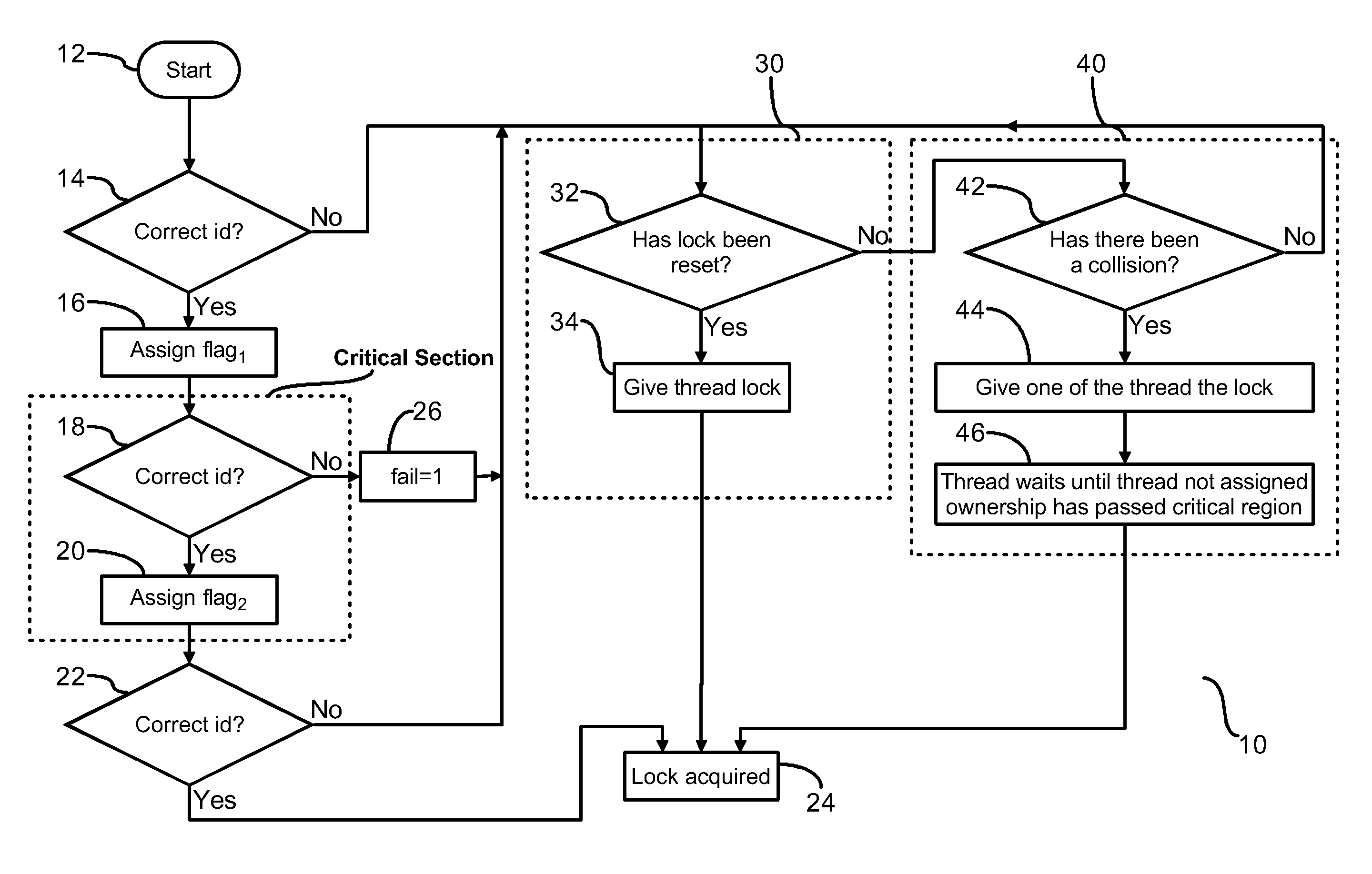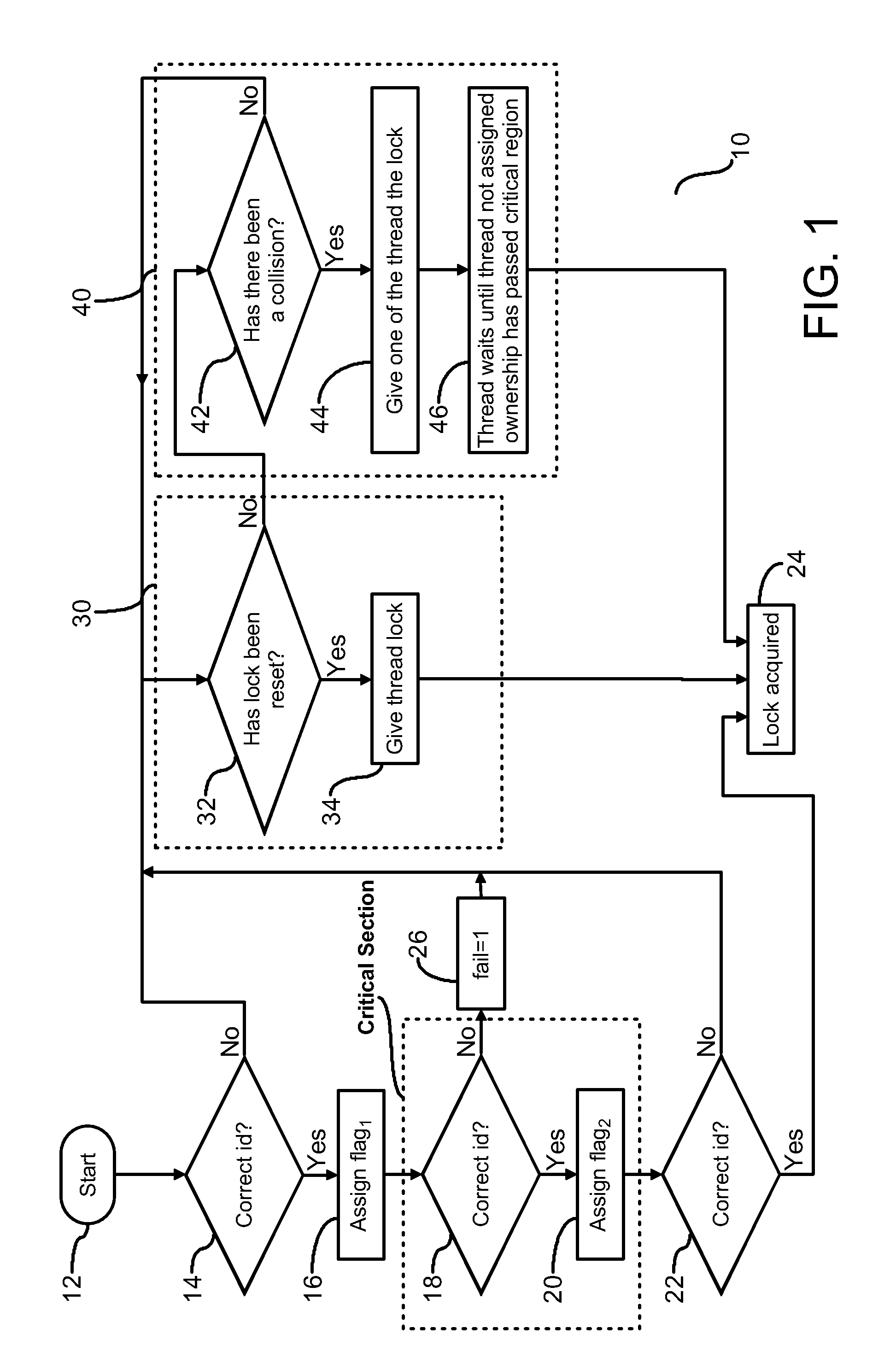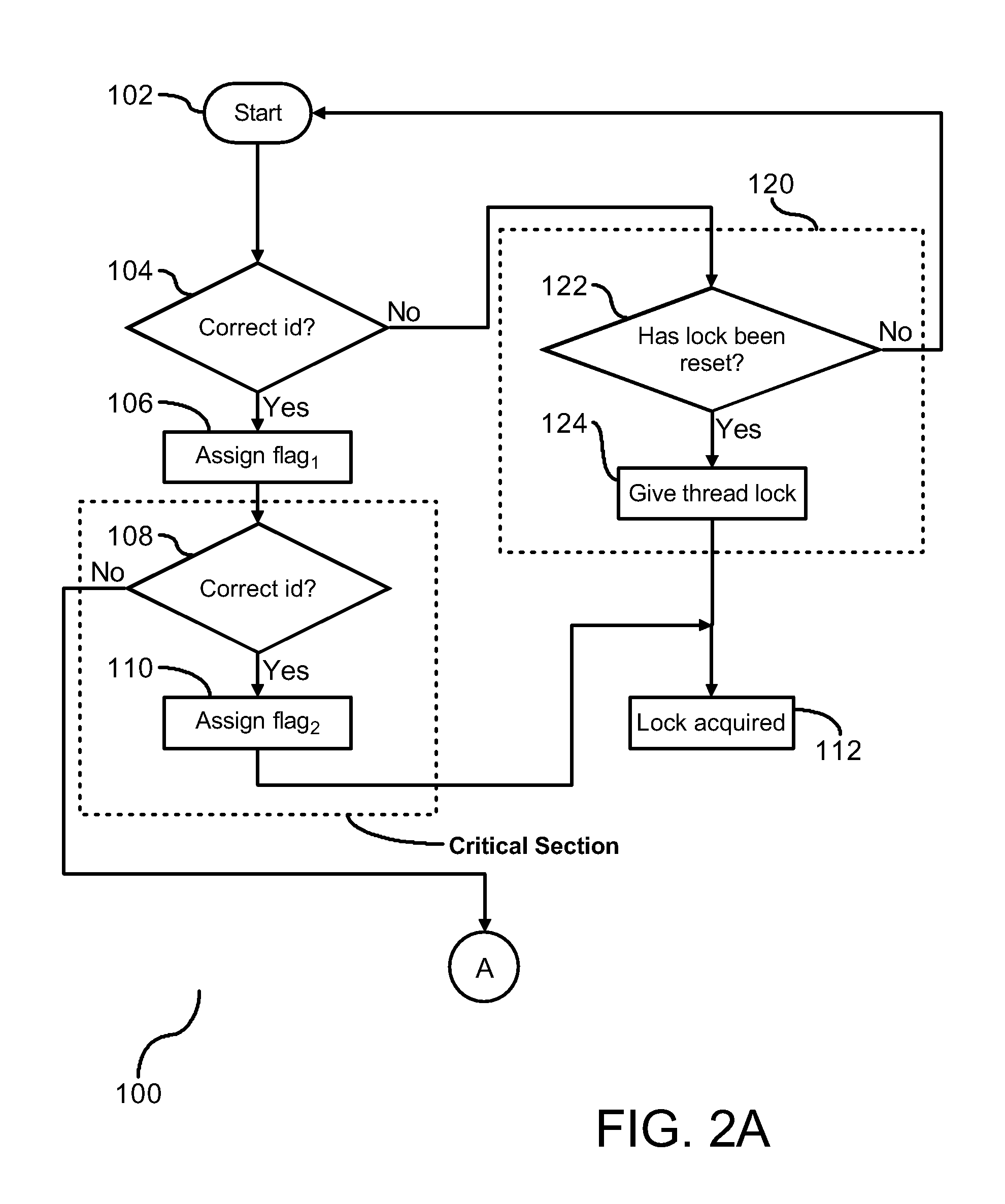Method and System for Speeding Up Mutual Exclusion
a mutual exclusion and method technology, applied in the field of methods and systems for speeding up mutual exclusion, can solve problems such as degrade performance, process synchronization, and use of system resources
- Summary
- Abstract
- Description
- Claims
- Application Information
AI Technical Summary
Benefits of technology
Problems solved by technology
Method used
Image
Examples
Embodiment Construction
Overview
[0017]In a multiprocessing computer system having shared objects, locks are granted to threads requesting exclusive access to one or more of the shared objects. Java program perform many lock operations while supporting thread locality. To mitigate use of atomic operations associated with granting of the lock to the requesting thread, continuity of the lock with a previously granted thread may be maintained with non-atomic operations. Atomic operations are implemented on a limited basis to either reset ownership or to assign a lock to a requesting thread in the event continuity of the lock with the thread is interrupted.
Technical Details
[0018]FIG. 1 is a flow chart (10) illustrating a process for efficiently managing ownership of a lock by a thread in a multithreaded computer system. Each thread in the system is assigned an identification number. Initially an instruction of a thread is loaded and a first set of tests is conducted to determine if ownership of a lock may be he...
PUM
 Login to View More
Login to View More Abstract
Description
Claims
Application Information
 Login to View More
Login to View More - R&D
- Intellectual Property
- Life Sciences
- Materials
- Tech Scout
- Unparalleled Data Quality
- Higher Quality Content
- 60% Fewer Hallucinations
Browse by: Latest US Patents, China's latest patents, Technical Efficacy Thesaurus, Application Domain, Technology Topic, Popular Technical Reports.
© 2025 PatSnap. All rights reserved.Legal|Privacy policy|Modern Slavery Act Transparency Statement|Sitemap|About US| Contact US: help@patsnap.com



